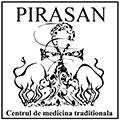The pressure exerted upon the bone marrow and the spinal nerves triggers a number of specific symptoms:
- pains in the area of the shoulders and of the neck that may iradiate towards shoulders
- stiffness in the cervical area
- migraines; sub occipital and occipital pains (the vertebral arteries irrigating the cerebellum with blood are located in the lateral vertebral bodies of the cervical area; when they are compressed, the cerebral trunk and the cerebellum will no longer receive enough blood causing cerebral hypo oxygenation)
- muscular spasms in arms and legs
- dumbness and tingles in the upper limbs
- motor disorders in the lower limbs
- balance disorders and unsteady gait (ataxia)
- miction and defecation disorders when the bone marrow is affected
- sensitive disorders in shoulders, arms and lower limbs
- diminished reflexes in the severe cases
- disorders of the organs coordinated by the damaged spinal nerves
- insomnia
- vision disorders
- lipothymia
- memory and concentration deficiencies, diminished intellectual capacity (as a result of the poor cerebral oxygenation)
Causes
Sedentarity, occupational traumas, exposure to low temperatures and draught, obesity and a bad body posture maintained for a long time are factors that weaken the tone of the paravertebral muscles; they slow down circulation and local metabolism in the articular cartilages, causing sclerosis of the intervertebral disks and degeneration of the cervical vertebrae. For the degenerative process to affect the cervical area and become spondylosis, there must also be a triggering cause. In this case, a number of micro-fragments of paravertebral muscles are caught between the cervical vertebrae, a phenomenon that will consequently trigger the whole physiopathological mechanism of cervical spondylosis.
Treatment
In traditional medicine, treatment of cervical spondylosis tries to restore the oxygenation and the local metabolism, eliminating the accumulated residues and toxins; to release the micro-fragments of muscle and to reabsorb the osteophytes. The herbs used in the treatment programmes help to recover the muscle tone and the articular mobility and to rehydrate the intervertebral disks. The acupuncture and Tibetan thermotherapy sessions play a major part in releasing the pressure exerted upon the medullar belt and the spinal roots. Regeneration of the medullar lesions or lesions of the spinal nerves may be done where the degree of damage allows it.

